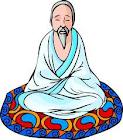 This simple meditation is designed to help you become attuned to the individual energy of each chakra. It can help you get a feel for how each one is working and of their effects on your physical, mental and emotional bodies. Balancing and cleansing your chakras promotes harmony on all levels and can assist with spiritual growth and awareness.
This simple meditation is designed to help you become attuned to the individual energy of each chakra. It can help you get a feel for how each one is working and of their effects on your physical, mental and emotional bodies. Balancing and cleansing your chakras promotes harmony on all levels and can assist with spiritual growth and awareness. Preparation
Choose which chakra you would like to work on and select the corresponding crystal or gemstone. It is best to lie down in a quite place where you will be undisturbed and to have subdued lighting. Incense and candles can help create a lovely environment but take care as they may present a fire hazard.
Place your chosen crystal on the relevant chakra. For example, if you chose Carnelian, put it on your sacral chakra which is about 5 inches below your belly button. The Crown chakra is not on the physical body but immediately above the top of your head, so you would position the crystal just above your head on a pillow or cushion. The Base chakra is situated between your legs immediately at the base of your spine around the genitals. It can be difficult to balance a crystal here; therefore placing it on the floor immediately adjacent to this area is fine.
Meditation
Let your mind and body relax by concentrating on your breathing. Wait until you feel your breathing is calm and rhythmical. When you feel ready, gently focus your attention to the part of your body you will be working on. Imagine now you are breathing through that area. If we use the example above (Carnelian on the Sacral chakra) then you would imagine vibrant orange being breathed into this area. Keep doing this for a little while, then with an open, still mind, mentally scan that area. Take note of any reactions. It may be a physical sensation, a mental image or you may get an emotional response. Does the energy feel too fast, too slow or sluggish? Does it feel vibrant or dull and lacklustre?
You may also notice sensations in other parts of your body which seem unrelated to the specific chakra you are working on, but of course they are not! If this happens, take note of them and then when you’ve finished the meditation, look for the link. For example, if someone suffered from Irritable Bowel Syndrome and was working on the Sacral chakra, but experienced a sensation in their chest, it may be an indication of the emotional effect that the condition was having on them. Or they may feel a sensation in their throat, which could signify that they needed to express how the condition affects them, but previous they haven't really spoken about it.
Results
By taking time to get a 'feel' for each of your chakras through meditating on them individually, your consciousness as a whole will begin to grow. We begin to see the way our body really works; the relationship between different areas and the effect that external stimuli has on us. For example, if you were worried about something you might assume, quite naturally, that this worry was being experienced in your head (where we think), but the physical effects may actually be felt in your stomach - worry can make us feel sick and excessive mental stress can result in a stomach ulcer. Therefore, we would need to work on the Solar Plexus as well as the Third Eye (Brow) chakra.
As a beginner it would be advisable to start by meditating with each chakra individually, in order to acquaint yourself with their unique properties and links to your body. As you progress, however, you can choose to work on all seven main chakras in one session, taking time to focus on each in turn (working up from the Base to Crown). It is not always easy to lay all of the crystals on yourself, so you may need to ask a friend to help.
Whilst it is best to start out with the corresponding crystal for each chakra, if as you progress you feel drawn to use a different crystal, then you must trust your instincts; you can't make a mistake!
Finishing Your Meditation
When you finish your mediation it is important to remember to ‘ground’ yourself; to bring your energy and focus fully back to the physical. This process applies the same to any subtle energy work undertaken; meditation, healing, divination, etc. A cup of tea and a biscuit is always a good way to do this (any non-alcoholic drink and a snack will suffice) or even a walk in the garden if you have access to one.
It takes time and experience to piece the bits of information together, but the energy of the crystals will automatically help to balance and realign your chakras when you use them without any conscious input or effort.
It can be very useful to keep a chakra diary; to record any sensations, emotions or images felt or experienced when working with your disc set. Over time this is a very effective way of learning the relationship between crystals and color and the effect they have on different areas of your body.



















































